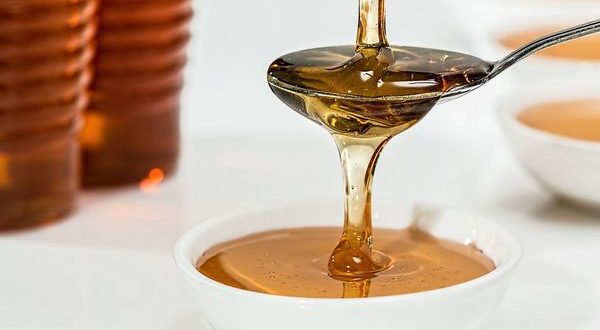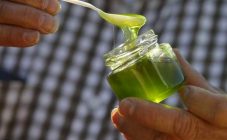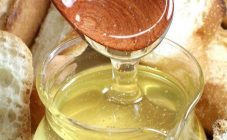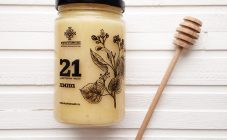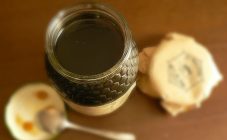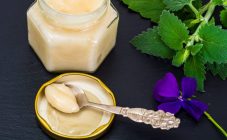Content:
Honey is a product of bee's vital activity, which is valued for its beneficial composition. It contains many vitamins and minerals that are necessary for the human body and are often used for medicinal purposes. Mostly valued is a product with an interesting floral aroma and sweet taste. But there are times when honey with bitterness comes across. It is worth understanding what kind of honey it is, and what are the causes of bitterness.
Bitter honey what is it
Today, many varieties of products are used for consumption. For the most part, all varieties have a sweet taste, thanks to which the beekeeping product is loved by adults and children. But cases when bitterness appears after honey in the mouth are also not uncommon.
This becomes an especially strong blow for beginners in beekeeping, because many questions arise, which should be dealt with gradually. It is possible that the bitterness product will not differ in any way in characteristics. We must not forget that there is a large variety of varieties, the difference of which may be not only composition, but also taste.
Several honey species are defined by origin in botany:
- Floral origin - refers to the results of the work of bees to collect and process pollen. This variety includes nectar from the same type of plants or a mixture of different flowers;
- Honeydew - it turns out when bees process honeydew and honeydew collected from the deciduous part;
- Mixed origin (mixing of pollen and honeydew).
Depending on the plant from which pollen is collected, honey is distinguished:
- Lime - has a light yellowish color. Interesting, bright scent of flowering linden. Depending on the location of the lime trees, honey may or may not have a bitterness. Liquid honey mass - transparent, has a greenish tint;
- Buckwheat - can vary in color from dark yellow to dark brown with an interesting red tint. Produces an interesting pungent taste;
- Of sunflowers - usually light golden in color, the brightness becomes even greater under the sun's rays. By its taste characteristics it has a tart taste and a pleasant sunflower smell;
- Cypress - becomes white after crystallizing. In liquid form, it is light, with a slight greenish tint. Differs in delicate aroma and pleasant taste;
- Acacia - easy to recognize by its subtle, delicate aroma and white color with a greenish tint. After crystallization, it becomes golden in color;
- Cotton plant - originally water-like, transparent or extra white. It stands out for its unusual peculiar aroma and pleasant taste. Freshly harvested products immediately taste like the plant from which the pollen was collected;
- Clover - is divided into 2 types: white clover and red clover. The first type is white, transparent, mostly with a greenish tint and bright taste. The second type differs only in red-yellow color and longer crystallization.
Raw materials for bitter honey
In addition to pollen, bees can collect and process other substances into a treat. So, collecting the fall of the toiler, they receive raw materials for bitter honey. Aphid secretions located on foliage are considered honeydew. Such substances attract insects with a sweet taste and a thick consistency.
Most of the paddock is foliage from trees and shrubs, but small drops can roll down to the ground. Bees manage to collect the largest amount of secretions on linden, maple, poplar and walnut trees.
Another material that gives bitter honey is honeydew. Honeydew is a sweet-tasting discharge of needles, spruces and pines, for the appearance of which insects are not needed. An increase in the released substance occurs during a sharp change in temperature and low air humidity. The reason why striped insects begin to collect honeydew and honeydew is that there are no or not enough nectar sources in the flying part. This often happens in hot, dry weather.
Softwood honeydew products can be identified by their color, which can range from light to dark amber. The consistency is viscous, stretches, most often has a specific bitter-sour taste and an unpleasant odor. These properties are associated with the high content of volatile oils and resins. Crystallization of such a product takes much longer than usual.
Reasons why honey is bitter
Often eating honey, a bitter aftertaste appears and the question is, should the honey taste bitter. There is more than one reason why honey tastes bitter. First of all, it should be understood that the variety of varieties of honey products differs among themselves not only in composition and nutritional properties. Color, taste and aroma may differ. This does not mean that the product is not suitable for consumption.
The production of honey with a bitter taste can be due to several reasons. The first step is to exclude the beginning of product fermentation. Violation of the technology for the collection and storage of bee waste products provokes fermentation.
A characteristic bitter taste is considered for such honey varieties as:
- dandelion;
- heather;
- cornflower;
- rapeseed;
- coniferous;
- green.
For the most part, these varieties are bitter due to the large amount of resins and essential oils in the products. The presence of such ingredients does not make honey dangerous or harmful. According to many beekeepers, such varieties are best used for prevention and treatment.
Another reason for the appearance of a bitter taste can be a violation of the storage temperature. Due to inexperience, many beginners begin to reheat honey products without going into the process in detail. The result is bitterness and a singed smell.
Drunk honey is considered dangerous for consumption. This product is the result of collecting pollen from plants containing toxic substances. Although such cases are very rare.
What honey is bitter and bitter
Many do not understand why there is bitter honey if there is a normal product. But such varieties are not only useful, but sometimes necessary for the body, due to their rich composition. It was described above which honey with bitterness does not harm health. Useful varieties include:
- dandelion honey;
- heather honey;
- rapeseed honey;
- cornflower honey;
- buckwheat honey;
- chestnut;
- rosemary.
All these plants give a certain bitter note during processing, but are considered useful. You need to control the amount of bitter enzyme, so you need to eat them, mixing with other foods. You can try mixing several different varieties before eating, trying to cover up the bitterness. The right tandem will help neutralize the annoying taste.
It should be borne in mind that cases where bitterness is not typical of the honey variety indicate the spoilage of the product. This means that such honey cannot be consumed and it is undesirable to use it for food purposes.In this case, it is better to get rid of such a product.
